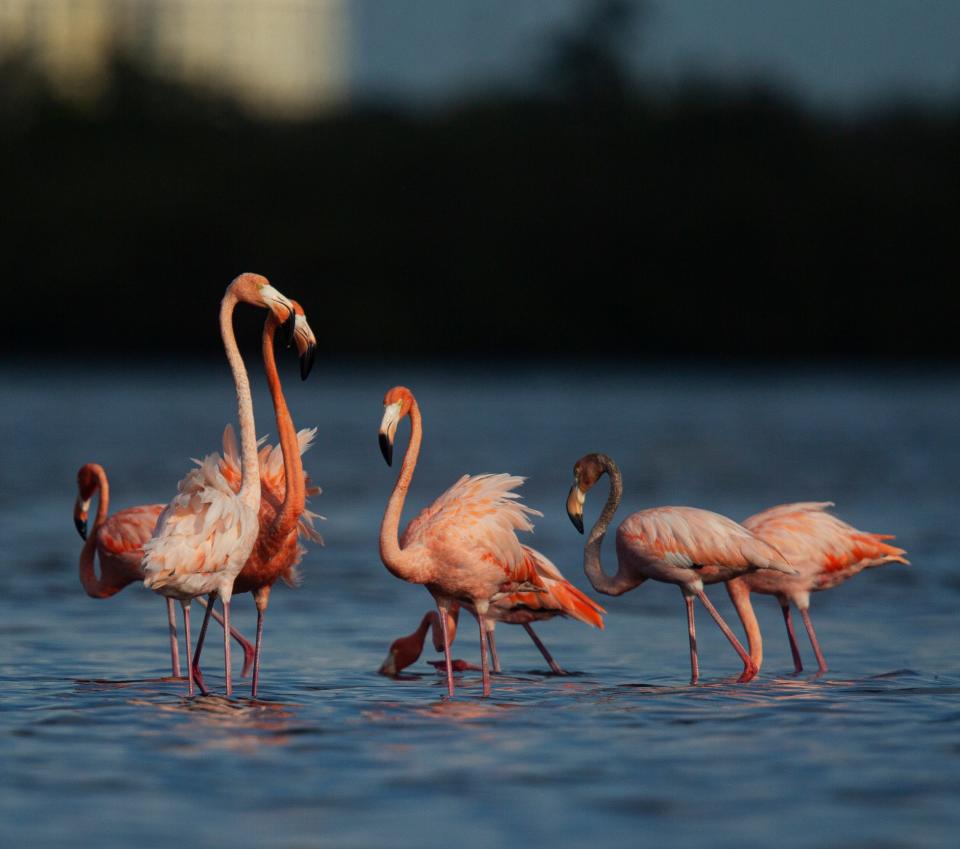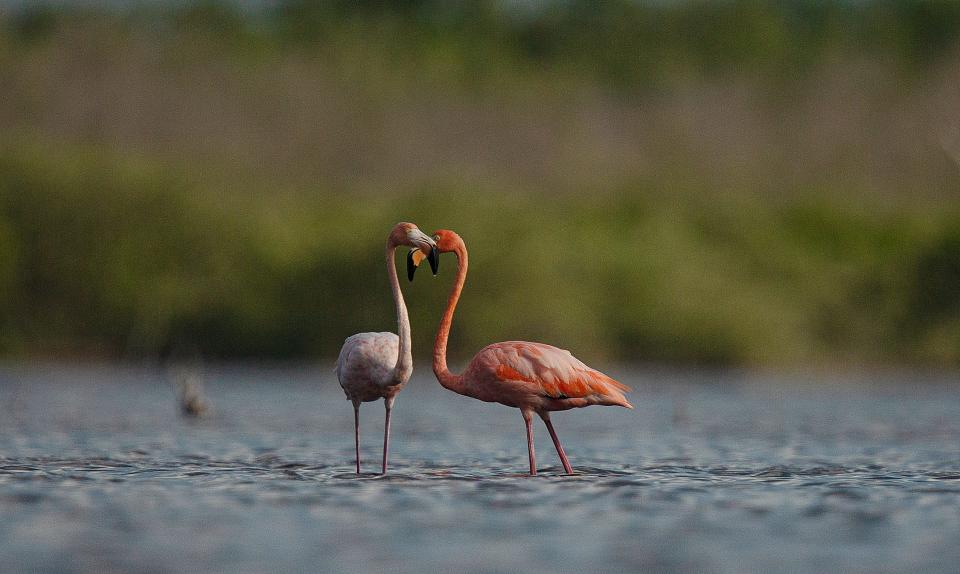Florida's real flamingos: Pink treasures still being reported on state's west coast
Flamingos just feel like they belong in Florida.
They're visually loud, shrimp-eating birds that wade in shallow waters, often standing on one slinky pink leg.
They like tropical weather and spend much of their time lounging in places like Cuba and the Yucatan peninsula.
And thankfully for bird lovers, Hurricane Idalia this summer scooped up dozens of flamingos and deposited them along the west coast of Florida and the Eastern United States.
But will the birds stay and rebuild Florida's historic flamingo population, or will the birds fly back home to Mexico?
"The flamingo reports are down to a trickle, and I don't' know if the birds have left or if people are less fixated on this now," said Jerry Lorenz, a biologist and flamingo expert for Audubon of Florida. "I get reports of 10 or 12 flamingos here or there in Florida Bay and one that there's 40 or 60 at another location."
Lorenz has been tracking flamingo reports in Florida for decades, and this year he's been overwhelmed with emails, phone and cell calls, all from people reporting giant pink birds.

"The maximum single count I've gotten (at one time) is 63, and it's kind of aggravating not being able to nail it down," he said. "It's been hard because so many people were reporting the same groups of birds, or the birds would move a couple of kilometers, but now I don't know where they are."
Lorenz and other researchers have found a trend in flamingos in that they've typically been hanging out in groups of five to 15.
"But at certain times they coalesce when conditions are good and then they spread back out," Lorenz said. "We've had groups stay more than a year. We had 60 at one time that hung around for several months and that was around 2015, so they can hang out for a very long time and then up and disappear."
Flamingos were even used for the opening scenes to the classic 1980s television program "Miami Vice", and they're the flamboyant face of the Florida Lottery.
More: Florida's panther appears to be in decline with few roadkills this year
But are they truly at home in Florida?
One hundred or so birds were picked up by Hurricane Idalia in August and delivered to the Sunshine State, with various sized groups being spit out of the storm as it blasted through the eastern Gulf of Mexico.
Experts believe the birds were in Mexico, and that the Category 4 storm pulled them into its eye and sent to Florida.
The big question now is whether or not they'll stay in Florida and become part of the local landscape or go back to their former grounds in Mexico.
Where have flamingos been found?
Flamingos were documented across much of the Eastern United States in late August and early September.
It's been two months, and the birds are still here, in Florida at least.
Flamingos are being reported in places like Tampa Bay and Pine Island Sound on social media sites such as Facebook and Instagram.
More: Reporter has greatest wildlife viewing day of past quarter-century in SWFL
But biologist and birders have argued for nearly a century over the bird and its place in avian Sunshine State lore.
Did they live and breed in the far southern tip of the state 500 years ago?
That question could become moot if any of dozens or so flamingos sent here by Idalia decide to stay here and breed.
Race track escapees?
Social birds capable of crossing oceans, flamingos have lived in parts of south Florida to some degree for decades, mostly in at roadside tourist attractions and a few avian preserves.
Birds occasionally escaped from those enclosures and were seen in various parts of south Florida.
"Taken together, the overall numbers of flamingos are too high to be explained by captive individuals that escaped," Audubon of Florida says. "There have been some recent flamingo escapees from the Hialeah Park Race Track, for example, where the birds were imported as tourist attractions beginning in the 1930s, but there just aren't enough to account for all the sightings."

According to Audubon, the last large flock of flamingos in Florida in the 1900s were killed when 100 birds were shot just after the turn of the century, their feathers sold and used to decorate hats.
But Audubon scientists have argued that the birds were already on the comeback here, that the species has been expanding its range for decades.
"These visitors reflect successful conservation efforts in the Caribbean, … the Yucatán population, for example, swelled from about 6,000 to 27,000 between 1954 and 1998," an Audubon of Florida website reads. "Florida, for its part, is also looking more flamingo-friendly these days, thanks to recovered and protected habitat in Everglades National Park and other South Florida refuges."
Lorenz said it may be decades before we know for sure whether or not flamingos are at home in Florida, as it seems they were a century ago.
"I don't think I'll ever be comfortable with saying we have a resident population," Lorenz said. "They could just up and go somewhere else. They vanish when they want to."
Connect with this reporter: Chad Gillis on Facebook.
This article originally appeared on Fort Myers News-Press: History aside, flamingos could stay, breed in Sunshine State
